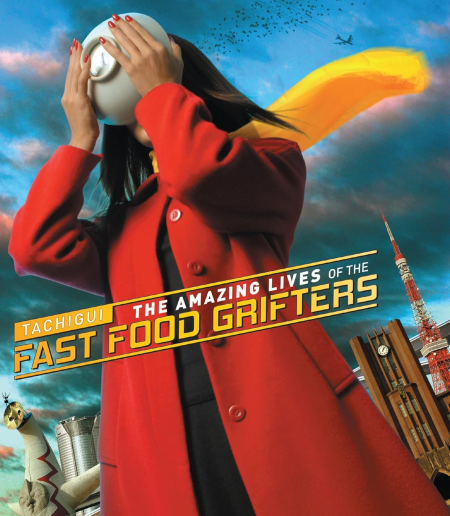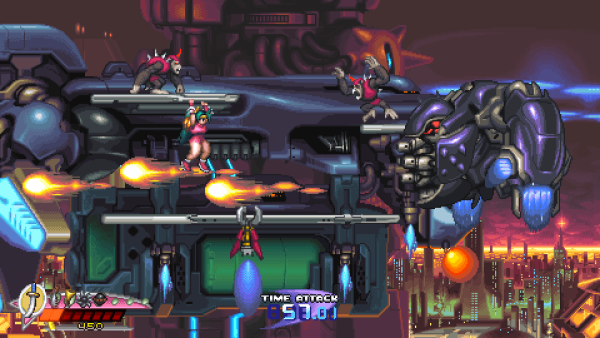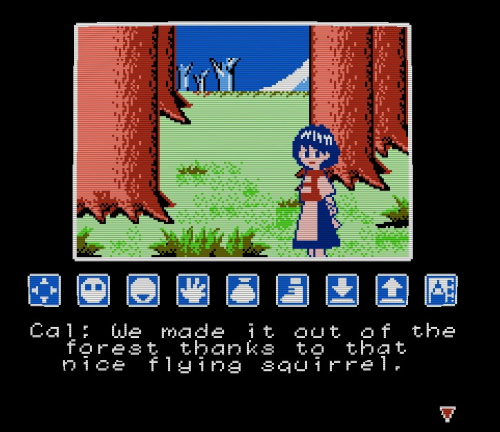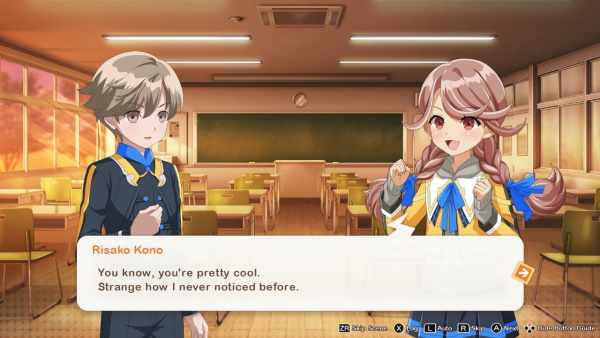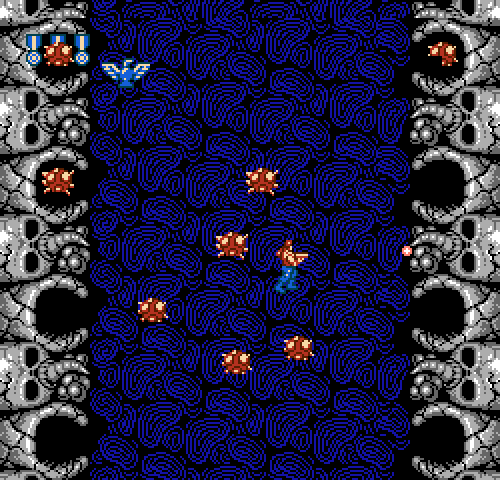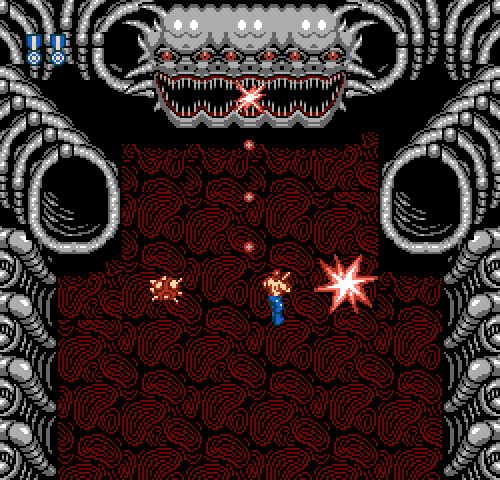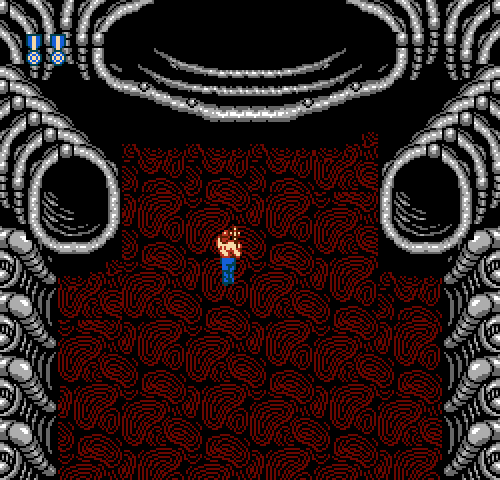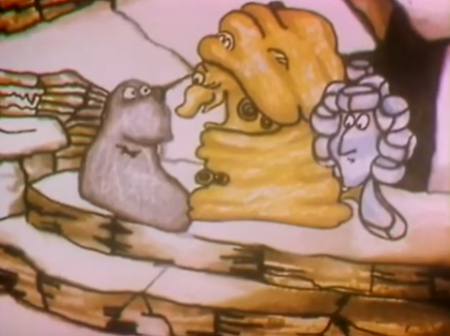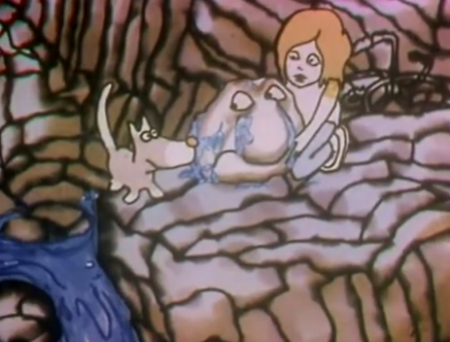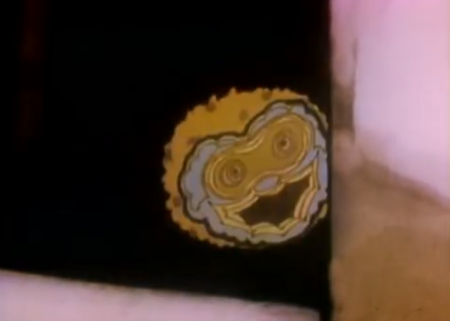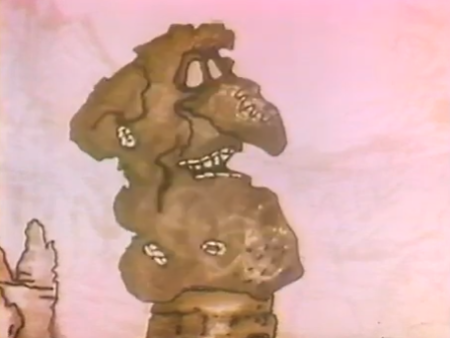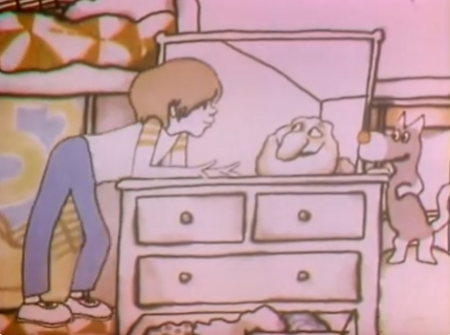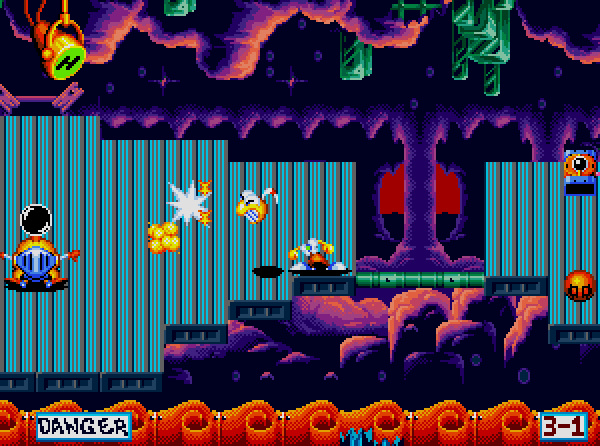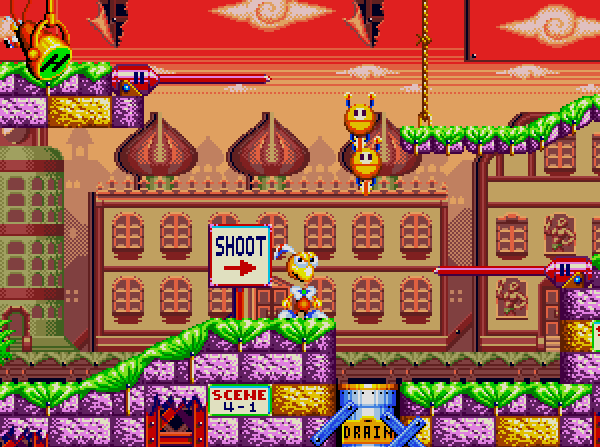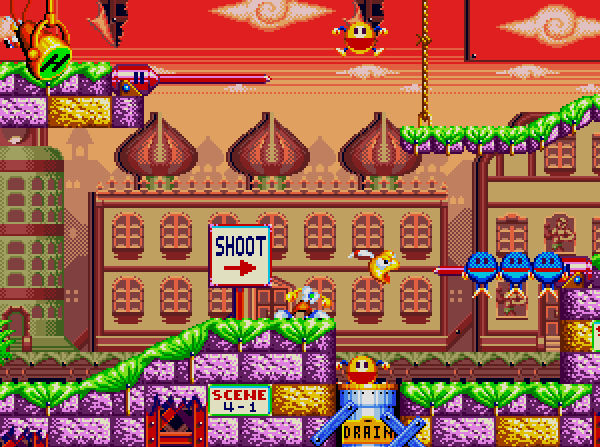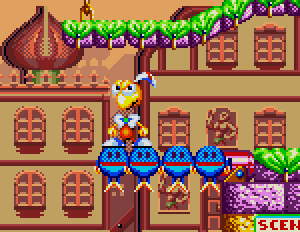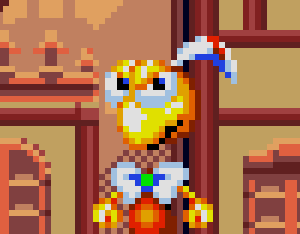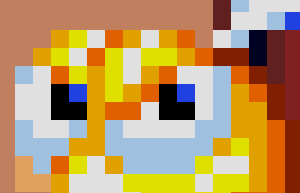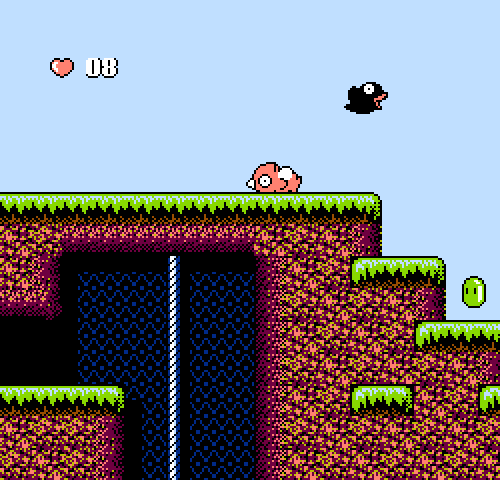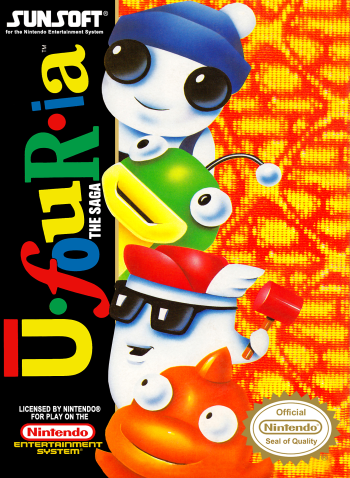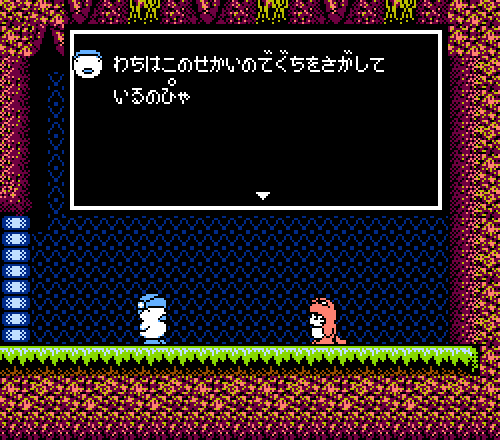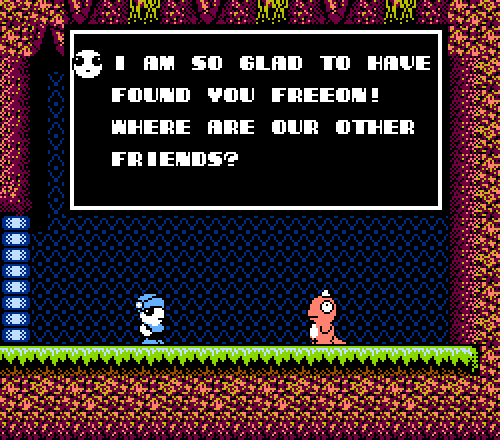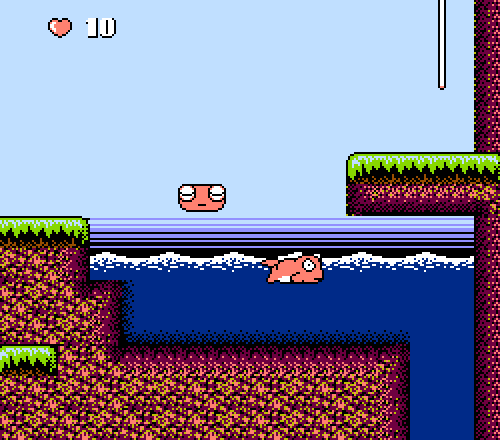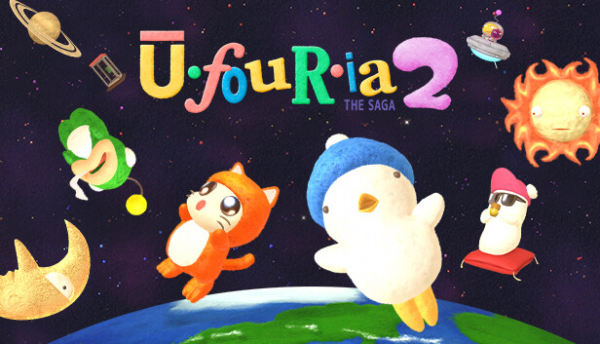Dive Alert keeps underappreciated company. It’s on the Neo Geo Pocket Color, a fantastic handheld system unfairly cut down when the pachinko monsters of Azure bought SNK and canceled their projects. It’s the work of Sacnoth, a short-lived developer that crafted a number of intriguing, creative RPGs. And Dive Alert is a game that really wants to tell a story, a game that sometimes wants to fight submarine battles, and a game that doesn’t care if the player might get bored.

The first moments of Dive Alert impress, introducing some appealing pixel-anime characters, high-tech ships, and a mecha who looks a lot like Giant Robo. We learn that the world is now mostly ocean, continents and civilizations long since submerged in disaster. Bellicose Automan machines roam the seas, while humans scrape by and trade rumors of Terra, the last remaining dry land. One such human is either Matt or Becky, depending on which version of Dive Alert you play, and the unfolding quest involves rebel factions, overcontrolling computers, and a few conspiracies. It’s a setting seen in Waterworld, The Incredible Tide, Blue Sub No. 6, The Drowned World, Future Boy Conan, Tide Line Blue, Mega Man Legends, and other tales stretching back over a century, but it’s one of those science fiction standards I never really mind—perhaps because, given our current environmental state, it’s so plausible.
One thing becomes clear very early: Dive Alert does not care about quick pacing. Handheld games tend to be brisk in their setups and lenient in their storytelling, accessible enough to pick and up and put down when subway commutes or lunch breaks demand. Dive Alert isn’t having that. The player sits through a lengthy conversation between Matt or Becky and a Navicom, detailing their motivations, mechanics, and purposes behind their submarine forays. It’s all familiar ground, though the illustrations of the characters are detailed for a handheld game of this vintage.
Soon it’s time for the first submarine battle. And then it’s time to ask “Wait, THIS is the gameplay?”

The combat takes place on a sonar display, with your ship a mere triangle and the enemy Automan vessels mere dots around it. This is not an optional viewpoint, like the map screen in an RPG. The game fully expects you to play out submarine duels in a rotating grid that’s just as slow as an undersea battle might be in real life. It brings to mind Silent Service and other simulations more than the more active combat of In the Hunt, Sqoon, or Sub Rebellion (or the unreleased Mariner’s Run). While there’s something to be said for authenticity, it’s an approach unexpected after the game’s graphically stylish cutscenes.
A simple perspective might help these submarine battles move quickly, but Dive Alert isn’t having that. Your ship turns slowly, launches torpedoes slowly, and evades attack slowly—or not at all. It’s strategic and careful and…well, tedious. Landing hits isn’t particularly satisfying when it’s just a matter of seeing one dot collide with a small blob, and there’s only some minor claustrophobic tension when your own sub is threatened.
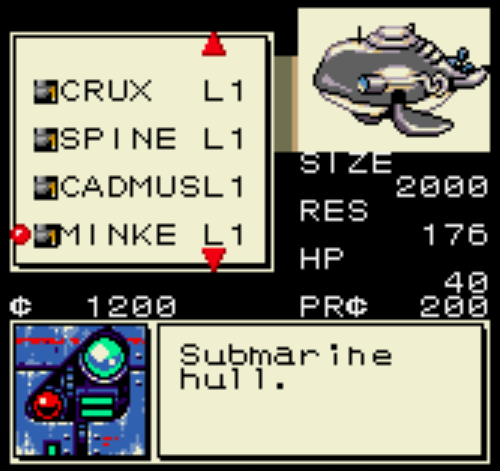
There’s more to the battles, of course. Each dive can reach one of four different depths of the ocean, and your ship gains new weapons and slight speed upgrades (which vary across the two different versions). If you’re willing to put yourself fully into Dive Alert’s clutches, to invest yourself in the overwritten cutscenes, explore the extensive customization of your submersible, and imagine dramatic implications for those geometrically bland sonar-screen clashes, Dive Alert has some meat to it.
The story goes routine places in its twists, but it at least has some twists. The long-winded cutscenes are handsomely rendered and devoted to showing off characters, from the protagonist and their Navicom to the various merchants and rebels, including a classic Yatterman trio of pseudo-villains. And even though the dialogue is overwritten for what it conveys, it's sometimes a welcome break from that dinky little navigation screen.
That awkward gameplay viewpoint is puzzling in light of Dive Alert’s generally striking looks elsewhere. The cutscenes are full of expressive portraits and nice background scenery. There’s a multitude of submarines, from robotic whale-ships to old-fashioned U-boats, that you can commandeer (and never see on the playing field as anything but a triangle). There’s even a bonus shooting gallery with graphics far better than the main gameplay.
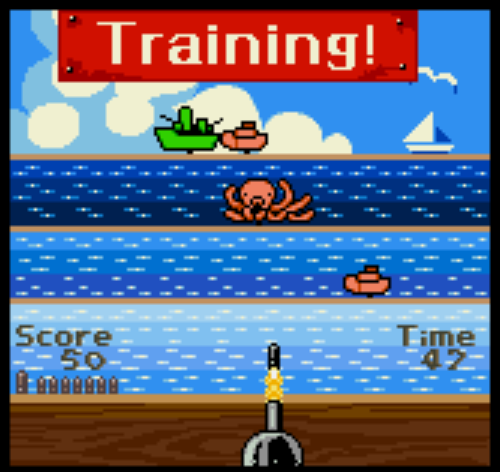
It's enough to make one theorize that Sacnoth trimmed down Dive Alert for either time or memory limitations. The game’s not very long in terms of actual missions, and the intro’s above-mentioned Giant Robo analogue apparently doesn’t even show up. Perhaps the gameplay really is just a sonar side-screen meant to accompany a richer and more detailed vision of submarine warfare—one that the developers never finished.
Dive Alert’s multiplayer mode allows battles over link cables for the American and European releases of the game, but the Japanese version sports the Neo Geo Pocket Color’s wireless feature, allowing for limited online play. It’s an intriguing concept that unfortunately couldn’t get approved outside of Japan, though it’s hard to imagine the game’s slow combat enticing hordes of players.
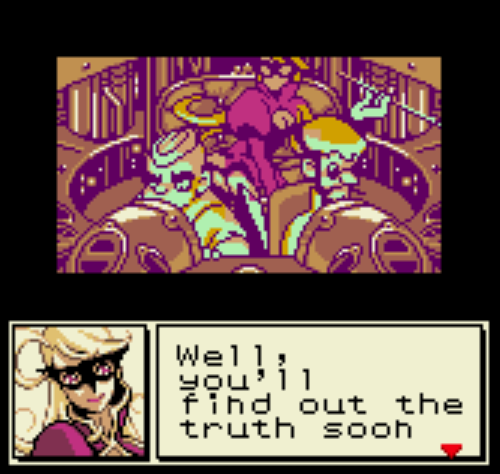
One can’t call Dive Alert the most boring game on the Neo Geo Pocket Color, not when there’s a load of Aruze pachislot games to despise for several reasons (they KILLED SNK, dammit). Yet it’s very much a slow and stubborn game, one that makes you watch it and play it exactly how it wants, no matter the consequences.
This would be a habit that Sacnoth showed in other games. Founded by composer Hiroki Kikuta and some other Square expats, the developer tried hard to cut its own path. Dive Alert was their debut release, but their first big showcase was Kikuta’s creation Koudelka, a gothic RPG-adventure that sought lavish production values and an older audience with its tale of strangers gathered at a haunted monastery in 1898. It’s also another case of Might Have Been. Koudelka artfully presents its gothic trappings and shows some deft storytelling with its characters and voice acting (the title heroine is both refreshingly sharp and amusingly selfish), but its gameplay is divided between clumsy Resident Evil controls and unnecessarily frequent RPG battles. Even so, it’s a fascinating creation and a companion to the more accomplished Shadow Hearts games, and it’s a shame that Kikuta, who left Sacnoth not long after Koudelka, never got the chance to revisit it.
Sacnoth’s other Neo Geo Pocket Color outing would be Faselei!, a mecha strategy-RPG with some astounding anime aesthetics—including its own theme song. It’s a much more approachable and solid game than Dive Alert, though again Sacnoth marches to a different beat: players guide combat robots by making a list of commands, detailing every step they take on the screen. It’s novel but more cumbersome than a familiar, direct control method would be. At least the mecha look like actual machines of war and not just dots on a grid.
Back to Dive Alert. If it’s not among the greats in the Neo Geo Pocket Color’s library, it’s one of the most curious experiments there. On a system with lots of portable (and usually excellent) versions of quick-fix arcade games, here’s a dialogue-heavy and languidly paced submarine adventure that makes few concessions for the player. A quicker, prettier combat screen would have done wonders, but Dive Alert instead seeks a limited audience. And that’s precisely what it found.





